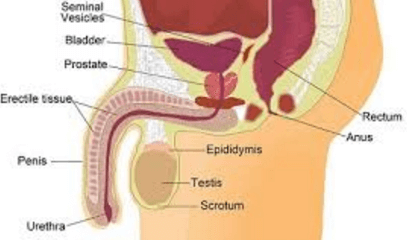Prostate Disorder
Definition:
Enlarged prostate, also known as benign prostatic hyperplasia (BPH), is a disorder that generally affects men 50 years of age and older. BPH is not the same as prostate cancer.
The prostate is a small, muscular gland (in the shape of a walnut) in the male reproductive system. It surrounds the urethra just below the urinary bladder and adds fluid to semen to allow sperm mobility.
Signs & Symptoms:
The severity of symptoms in people who have prostate gland enlargement varies, but symptoms tend to gradually worsen over time. Common signs and symptoms of BPH include:
Frequent or urgent need to urinate
Increased frequency of urination at night (nocturia)
Difficulty starting urination
Weak urine stream or a stream that stops and starts
Dribbling at the end of urination
Straining while urinating
Inability to completely empty the bladder
Less common signs and symptoms include:
Urinary tract infection
Inability to urinate
Blood in the urine
Cause:
The causes of prostate cancer are unknown, but some risk factors that have been identified are:
race Black American men have a much higher rate of prostate cancer than White American men
family history
history of sexually transmitted disease
older age
diet high in animal fats.
How To Cure:
- Kegel Exercises
Kegel or pelvic-strengthening exercises can help ease some of the discomforts of enlarged prostate as they help tighten and clench specific pelvic muscles to help control urination.
Empty your bladder and lie on the floor with your knees bent and apart. Tighten your pelvic floor muscles for 5 seconds, then relax them for 5 seconds. Repeat 10 to 20 times, 3 or 4 times each day. Pelvic floor muscles are the muscles you use to stop your urine flow.
Another option is to squeeze the muscles in your anus, then relax your pelvic floor muscles. Do it 10 to 20 times, a few times a day.
Regularly perform kegel exercises throughout the day. You can do them after waking up in the morning, at lunchtime, in the evening and before going to bed. Target your pelvic muscles only and avoid tightening the muscles in your stomach, buttocks or thighs. If you are having difficulty locating the pelvic muscles, get help from an expert.
Note: Men who suffer from chronic prostatitis or chronic pelvic pain syndrome must avoid doing kegel exercises.
- Aerobic and Resistance Exercises
Staying active is good for the prostate as well as overall health. Inactivity contributes to obesity, one of the risk factors for enlarged prostate.
Even a small amount of exercise like aerobic and resistance exercises can help reduce urinary problems caused by an enlarged prostate and can even prevent this problem.
Aerobic exercises can help you maintain a healthy weight. Incorporate aerobic exercises like walking, jogging, running, tennis, basketball and rowing in your daily routine.
Resistance exercises help improve strength and muscle tone, while reducing inflammation. Examples of resistance exercises are swimming, push-ups and lifting weights. Do these for 30 minutes, a few times a week.
- Sitz Bath
A contrast sitz bath is a soothing and effective remedy for enlarged prostate. The hot bath will help relax the pelvic muscles, reduce swelling and promote healing. On the other hand, the cold bath will ease pain.
Fill one bathtub with warm water and add ½ cup of Epsom salt to it.
Fill another bathtub with cold water and add a few drops of lavender essential oil to it.
First, sit in the bathtub with hot water up to your waist for 3 minutes.
Next, sit in the bathtub with cold water up to your waist for 1 minute.
Do this 2 more times. The last bath should always be in the cool water.
Enjoy a sitz bath a few times each week.
Note: Do not follow this remedy if you have acute bacterial prostatitis.


